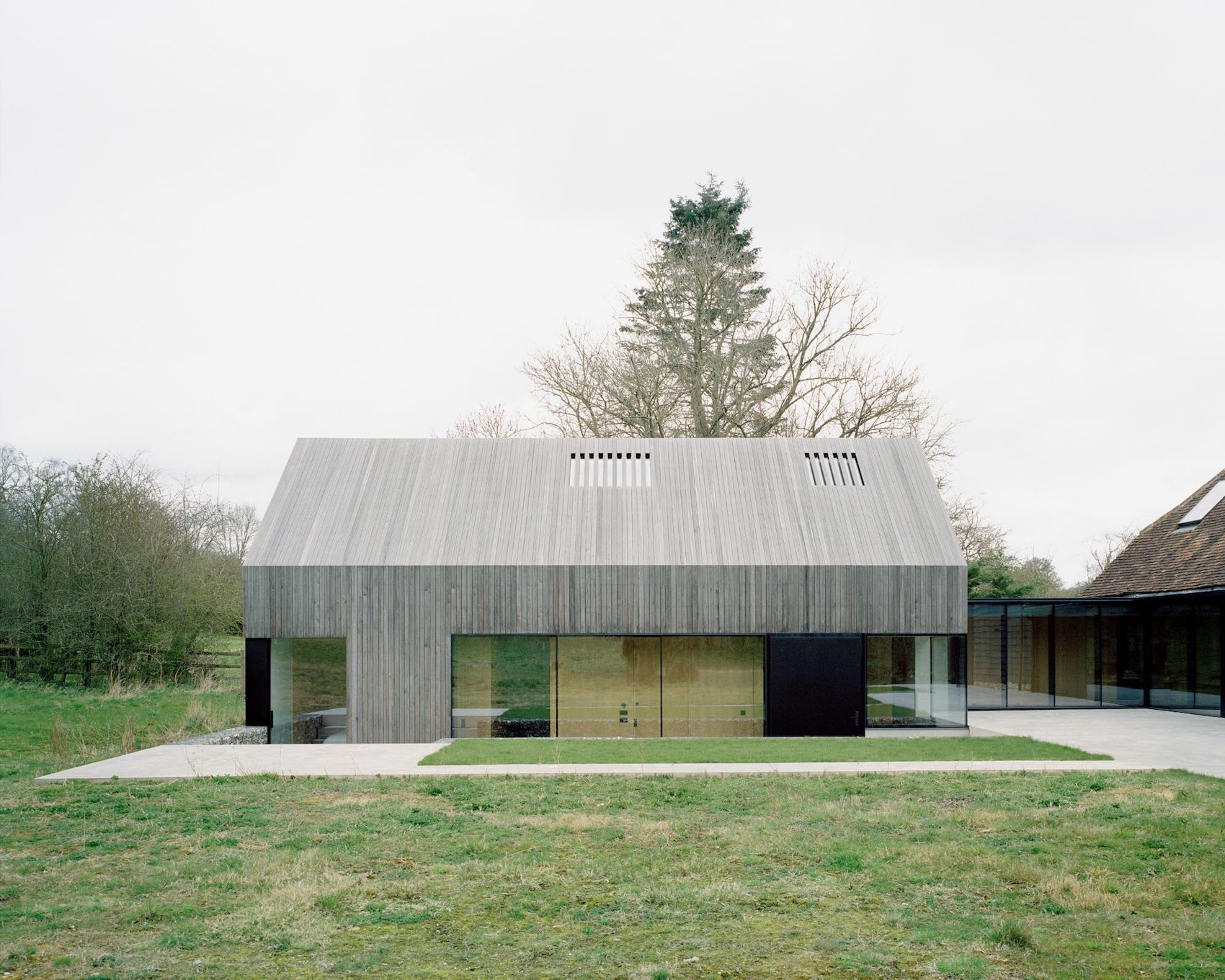Mclaren.Excell has skilfully reworked a pair of listed Oxfordshire barns, creating a sustainable and future-proof home.
Photos
Rory Gardiner
McLaren.Excell has transformed a pair of grade II-listed barns in Henley-on-Thames, Oxfordshire, into a sustainable and future-proof home. The project, includes a two-storey bedroom wing, which is connected to the existing structure via a glazed link. Increasing the size of the property from 187-square-metres to 290-square-metres, the new addition has enabled the architect to push the project’s sustainable and functional boundaries. It has also allowed the barns’ grandeur and scale to be celebrated and enjoyed through a range of design details, including 3.5-metre-high sliding glazed doors, and a free-standing kitchen and mezzanine ‘block’ clad in black steel.
“It is often the case with barns, or buildings of a similar agricultural or industrial heritage, that they have been messed around over the years as ideas and understanding of how to adapt them to a different purpose has evolved,” explains McLaren.Excell co-director Luke McLaren. “Hunts Green Barn was no different in this respect. A barn can successfully become an inhabited space, but not if it ceases to be recognisable for what it once was. As well as an exercise in sustainability and enlargement, this was as much a process of restoration. Two beautiful, listed barns had become hidden under a cloak of domesticity imposed upon buildings which were never intended to accommodate people.”
“In the older, larger 17th century barn the existing building envelope is untouched by any of our new interventions, save for the glazed doors,” continues McLaren. “The scheme is intended to be a gracious house guest, not an unwanted imposter. This approach is consistent throughout the barns, and the new accommodation wing treads a similarly respectful path: lowered into the landscape to diminish its visual impact, and wrapped in larch to weather gently, blending into the bucolic pastoral scene of barns, meadows, and wildflowers.”
Environmental performance is central to the project, and led to the decision to use low-embodied carbon materials wherever possible, including flint gabions, lime render and external cladding in sustainably-sourced larch boards for the walls and roof. In addition to installing a ground source heat pump, the insulation of the existing buildings was significantly improved.
Inside, black steel finishes and seamless concrete floors contrast with the exposed timber structure and window frames. Oak is used to ‘wrap’ the interior of the extension, including the walls, doors and joinery, creating a sense of intimacy and calmness, in contrast to the open-plan nature of the existing barns.
Additional Images
Source: Architecture Today






